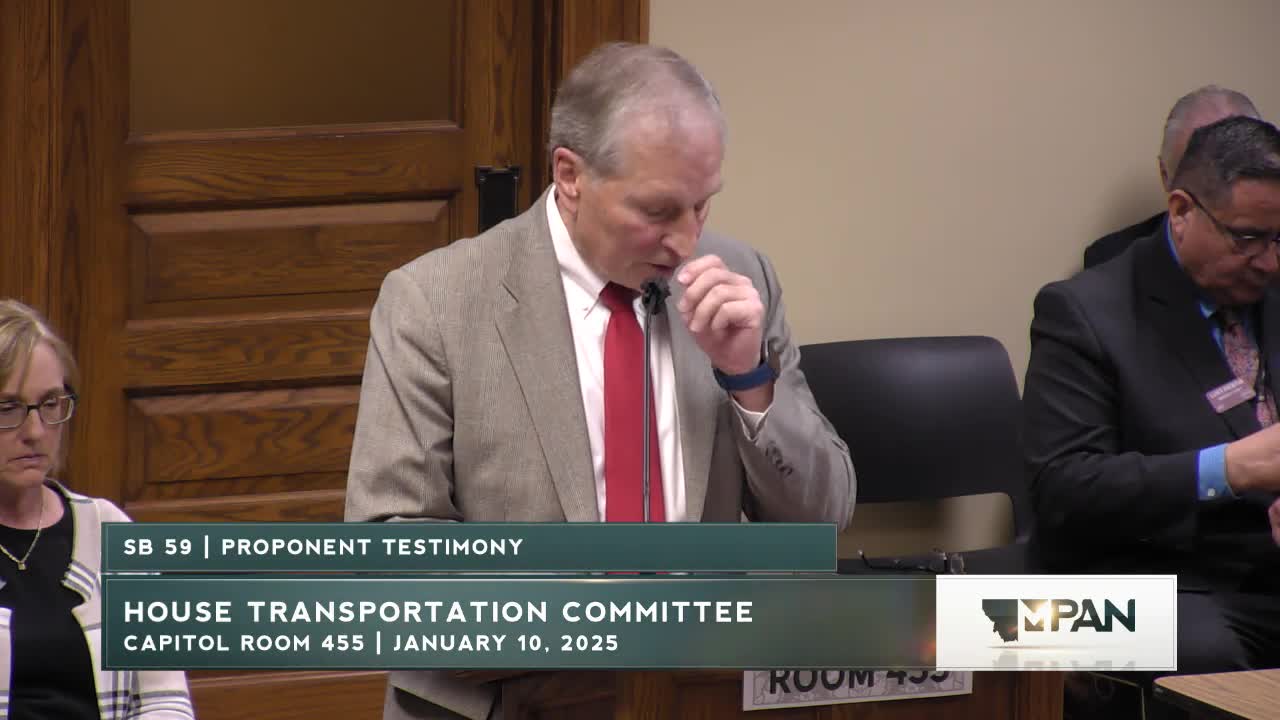Remembering Art Rambo a hero from Libby Montana who sacrificed all in Vietnam
January 10, 2025 | 2025 Legislature MT, Montana
This article was created by AI summarizing key points discussed. AI makes mistakes, so for full details and context, please refer to the video of the full meeting. Please report any errors so we can fix them. Report an error »

The House Transportation Committee of Montana convened on January 10, 2025, to discuss several key issues affecting the state's transportation infrastructure and funding. The meeting began with a review of the previous session's minutes, followed by a detailed agenda aimed at addressing pressing transportation needs across Montana.
The first item on the agenda was the evaluation of the current state of road maintenance and repair. Committee members expressed concerns over the deteriorating conditions of rural roads, emphasizing the need for increased funding to ensure safety and accessibility for residents. A proposal was put forth to allocate additional state funds specifically for rural road improvements, which garnered support from several committee members.
Next, the committee discussed the ongoing challenges related to public transportation services in urban areas. Members highlighted the importance of expanding these services to accommodate growing populations and improve overall mobility. A motion was made to explore partnerships with local transit authorities to enhance service offerings, which was unanimously approved.
The third agenda item focused on the implementation of new safety measures for highways. The committee reviewed statistics on traffic accidents and fatalities, leading to a robust discussion on potential legislative measures aimed at reducing these incidents. A recommendation was made to increase funding for highway safety programs, which will be further evaluated in upcoming sessions.
The meeting concluded with a discussion on future transportation projects, including the potential for new bike lanes and pedestrian pathways in urban centers. The committee agreed to prioritize these initiatives in their upcoming budget proposals, recognizing the importance of sustainable transportation options.
Overall, the meeting underscored the committee's commitment to improving Montana's transportation infrastructure and ensuring the safety and mobility of its residents. Follow-up actions will include further assessments of funding needs and collaboration with local agencies to address the identified challenges.
The first item on the agenda was the evaluation of the current state of road maintenance and repair. Committee members expressed concerns over the deteriorating conditions of rural roads, emphasizing the need for increased funding to ensure safety and accessibility for residents. A proposal was put forth to allocate additional state funds specifically for rural road improvements, which garnered support from several committee members.
Next, the committee discussed the ongoing challenges related to public transportation services in urban areas. Members highlighted the importance of expanding these services to accommodate growing populations and improve overall mobility. A motion was made to explore partnerships with local transit authorities to enhance service offerings, which was unanimously approved.
The third agenda item focused on the implementation of new safety measures for highways. The committee reviewed statistics on traffic accidents and fatalities, leading to a robust discussion on potential legislative measures aimed at reducing these incidents. A recommendation was made to increase funding for highway safety programs, which will be further evaluated in upcoming sessions.
The meeting concluded with a discussion on future transportation projects, including the potential for new bike lanes and pedestrian pathways in urban centers. The committee agreed to prioritize these initiatives in their upcoming budget proposals, recognizing the importance of sustainable transportation options.
Overall, the meeting underscored the committee's commitment to improving Montana's transportation infrastructure and ensuring the safety and mobility of its residents. Follow-up actions will include further assessments of funding needs and collaboration with local agencies to address the identified challenges.
View full meeting
This article is based on a recent meeting—watch the full video and explore the complete transcript for deeper insights into the discussion.
View full meeting
